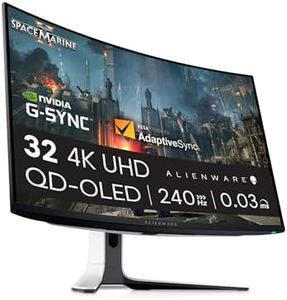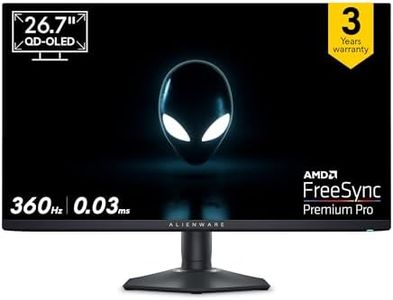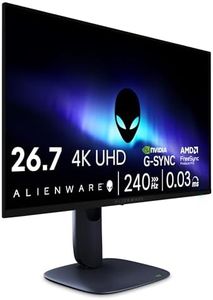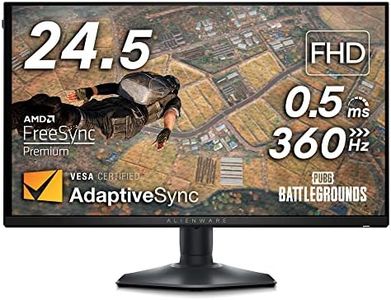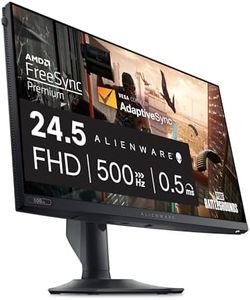We Use CookiesWe use cookies to enhance the security, performance,
functionality and for analytical and promotional activities. By continuing to browse this site you
are agreeing to our privacy policy
7 Best Dell Monitors
From leading brands and best sellers available on the web.Buying Guide for the Best Dell Monitors
When buying a Dell monitor, it’s helpful to understand how different features and specifications can impact your experience. Monitors come in a wide range of sizes, resolutions, and functionalities, so taking the time to understand your own needs—like whether you’ll use it for work, gaming, or media—makes it easier to choose the right one. Think about where your monitor will be placed, what kind of work or activities you'll do most, and how long you'll use it in each session. Getting the right mix of size, clarity, and features will help make your new monitor a great fit for your space and your eyes.Screen SizeScreen size measures the diagonal length of the display area, usually in inches. Larger screens provide more workspace and can improve comfort, especially for multitasking or entertainment. Smaller screens are often more affordable and fit better in compact spaces. For basic tasks and tight desks, screens between 21 and 24 inches are a solid choice. If you want to multitask or immerse yourself in games and media, go for 27 inches or bigger. Think about your desk space and how close you'll be sitting to the screen.
ResolutionResolution tells you how many pixels are on the screen, which affects how sharp and detailed the image looks. The most common are Full HD (1920x1080), Quad HD (2560x1440), and 4K (3840x2160). Full HD works well for general use and office work, while Quad HD offers greater sharpness for photo editing, gaming, and multitasking. 4K is best for creative professionals, gaming enthusiasts, or anyone who wants the absolute best clarity and screen space. The larger your monitor, the higher you should aim for in resolution to keep the image crisp.
Panel TypePanel type refers to the technology used in the screen, affecting color, viewing angles, and response times. The main types are IPS, VA, and TN. IPS panels have great color and wide viewing angles, making them good for graphics and general use. VA panels have strong contrast and are great for movies or darker rooms. TN panels offer fast response times for gaming but usually have poorer colors and angles. Match the panel type to your needs: IPS for quality and color, VA for movies, and TN for fast-paced gaming.
Refresh RateThe refresh rate, measured in hertz (Hz), is how many times the screen updates per second. A standard rate is 60Hz, which is fine for general work. If you notice motion blur or plan to do a lot of gaming, look for higher rates such as 75Hz, 120Hz, or even 144Hz or more. The higher the refresh rate, the smoother moving images appear, which is especially important for gamers or anyone watching fast-paced content.
ConnectivityConnectivity determines which devices you can plug into your monitor. Common ports include HDMI, DisplayPort, USB-C, and sometimes older ones like VGA or DVI. More modern options like USB-C allow both video and power delivery, which is handy for newer laptops. Make sure your monitor has the right ports for your computer or any devices you’ll want to connect, and consider extra ports if you want to use multiple devices.
Ergonomics and Stand AdjustabilityThis refers to how much you can move or adjust the screen—such as tilting, swiveling, raising, or rotating it. Having good adjustability helps prevent neck and back strain and can make long work sessions more comfortable. If you spend hours at your desk or like to alternate between sitting and standing, look for a monitor with flexible stand adjustments.
Color Accuracy and CoverageColor accuracy is about how true the colors on the monitor look compared to real life. Some monitors cover more of the color spectrum (like sRGB or Adobe RGB), which is important for photographers, designers, or anyone working with visuals. If you need reliable colors for professional work, pay attention to these specs. For basic use, standard color coverage is usually enough.
